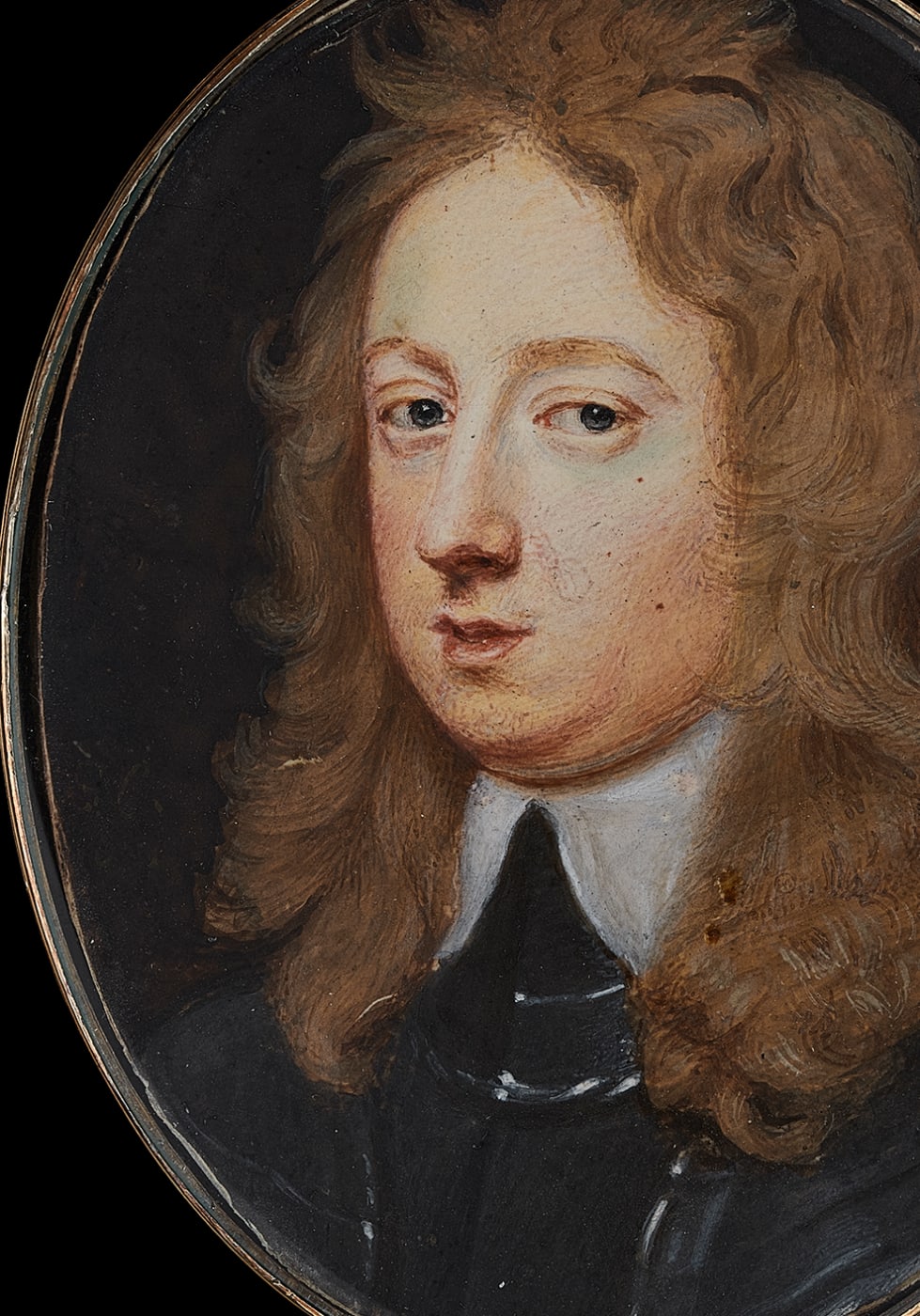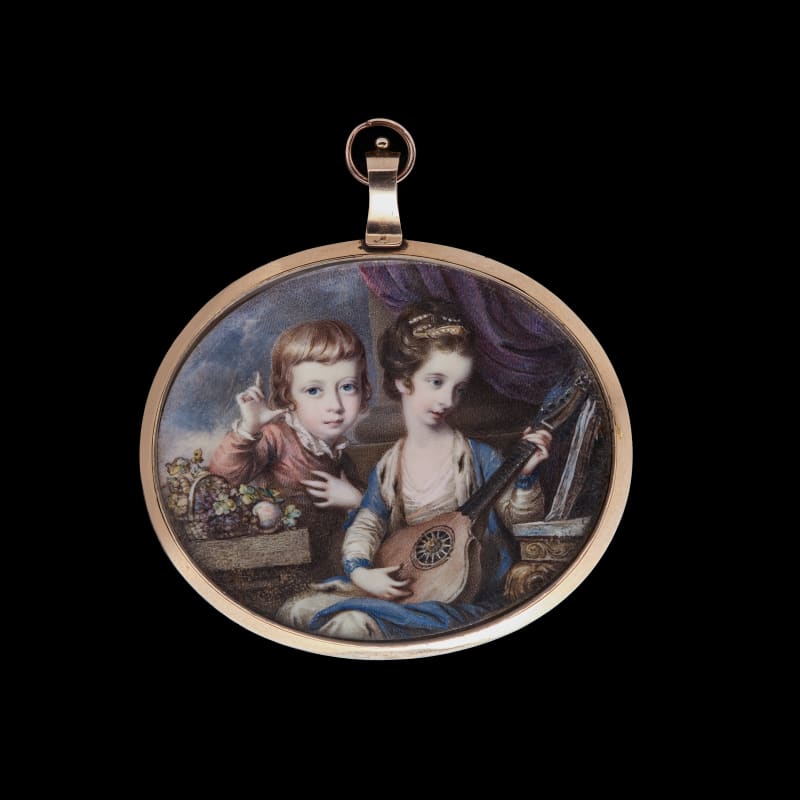Full Biography
The famous English portrait miniature artist Samuel Cooper, extolled by the diarist Samuel Pepys as ‘Cooper, the great Limner in miniature’ and by antiquarian and author John Aubrey as ‘The Prince of Limners’, is now widely regarded as the finest portrait miniaturist of the seventeenth century.[1] Although the details of his early life remain fairly obscure, he is thought to have been born in autumn or winter of 1608, the son of ‘Richard Cowper’ and ‘Barbara Hoskens’ who were married in the parish of Blackfriars in 1607.
Cooper and his younger brother Alexander appear to have been orphaned at an early age and entrusted to the care of their uncle, the miniature painter John Hoskins, from around 1610.[2] If this assertion is correct then it is likely that Cooper received an early professional training as an apprentice under his guardian uncle, perhaps with additional support from Sir Anthony Van Dyck[1] . Cooper emerged in his twenties a fully trained miniature artist of considerable skill, who by the mid-1630s was producing work comparable with, if not superior to, that of his master.[3]
Cooper established his own practice the year after Van Dyck’s death in December 1641 and, owing to his combination of acclaimed artistic talent and shrewd diplomacy, managed to transcend the potential limitations of political bias throughout the Civil War and Interregnum, retaining a wide circle of patrons ranging from military men to politicians and statesmen, aristocrats, courtiers, society ladies and royalty.
The famous English portrait miniature artist Samuel Cooper, extolled by the diarist Samuel Pepys as ‘Cooper, the great Limner in miniature’ and by antiquarian and author John Aubrey as ‘The Prince of Limners’, is now widely regarded as the finest portrait miniaturist of the seventeenth century.[1] Although the details of his early life remain fairly obscure, he is thought to have been born in autumn or winter of 1608, the son of ‘Richard Cowper’ and ‘Barbara Hoskens’ who were married in the parish of Blackfriars in 1607.
Cooper and his younger brother Alexander appear to have been orphaned at an early age and entrusted to the care of their uncle, the miniature painter John Hoskins, from around 1610.[2] If this assertion is correct then it is likely that Cooper received an early professional training as an apprentice under his guardian uncle, perhaps with additional support from Sir Anthony Van Dyck[1] . Cooper emerged in his twenties a fully trained miniature artist of considerable skill, who by the mid-1630s was producing work comparable with, if not superior to, that of his master.[3]
Cooper established his own practice the year after Van Dyck’s death in December 1641 and, owing to his combination of acclaimed artistic talent and shrewd diplomacy, managed to transcend the potential limitations of political bias throughout the Civil War and Interregnum, retaining a wide circle of patrons ranging from military men to politicians and statesmen, aristocrats, courtiers, society ladies and royalty.
Cooper married Christiana, the daughter of Thomasina and William Turner of Towthorpe, in 1642, and although the marriage was childless they lived happily in a grand residency on Henrietta Street, Covent Garden, from 1650 until his death. Cooper’s working progress was relatively slow as he sought to capture the verisimilitude and individuality of his sitters whilst tacitly conforming to traditional rules of elegance and enhancement that often required up to eight sittings. Moreover, John Evelyn and Pepys both recount the pleasure his clientele derived in witnessing him work, indicating his charisma and mounting celebrity status by this stage. The scale and clandestine nature of his likenesses had particular appeal and relevance in a period of political unrest throughout the 1640s and 1650s.
By 1650 Cooper was employed by the ruling Oliver Cromwell and his family. Shortly after his accession in 1660, King Charles II went direct to the artist’s studio for a sitting, using Cooper’s drawings to make the stamps’ for the minting of new coinage.[4] . Cooper’s political neutrality and outstanding talent overrode conventional notions of loyalty and power. Court oil portraitist, Sir Peter Lely[2] , even copied Cooper’s ad vivum miniature of the Lord Protector [Oliver Cromwell, 1653, Collection of the Duke of Buccleuch] to which the phrase ‘warts and all[3] ’ used as title for our past exhibition, was originally attributable. Various miniatures from the warts and all exhibition and otherwise, are below in the artworks section of this page. The artworks section include a variety of miniatures for sale by Samuel Cooper.
In 1663 Cooper was appointed official limner to the King, with his truly international reputation now at its peak. In May 1672 the portraitist Charles Beale recorded the death of ‘Mr Samuel Cooper, the most famous limner in the world for a face’.[5]
Philip Mould & Company have acquired, bought and sold a number of significant works by Samuel Cooper. Some remarkable and important miniatures sold by Philip Mould & Co. have included Cooper’s Portrait Miniature of Sarah Foote and the Portrait Miniature of Oliver Cromwell. such as the portrait miniature of Baptist May, as listed above in the artworks section of this page.















